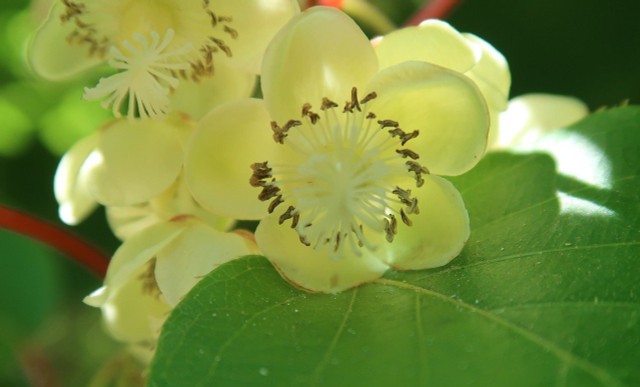Last updated on October 23rd, 2023 at 08:41 pm
Planting kiwis is not possible everywhere, but it is possible in the right location. What you need to know to grow kiwis yourself, you will learn in this article.
Growing your own kiwifruit is especially useful if you love to eat the fruit and want to take care of your environment at the same time. In the supermarket shelves you will find mostly kiwis from overseas. They have long transport routes behind them and therefore pollute the environment with high CO2 emissions.
The kiwi belongs to the ray genus family. The fruits are mostly associated with New Zealand, but originally come from China. The name “Chinese gooseberry” is derived from this. The kiwi – the heraldic animal of New Zealand – is the trademark of the New Zealand kiwi.
Kiwis have only been known in our country for about 30 years, but since then they have become one of the most popular exotic fruits. In Asia, kiwis have been highly valued for over a thousand years – not least because of their long shoots, which are used in paper production.
Contents
Planting kiwis: What you should know

Kiwis are perennial climbers with long shoots. The kiwi plant bears large wheel-shaped flowers in early summer. With the exception of a few new cultivars, the plant is dioecious. This means that the kiwi plant bears either purely male or purely female flowers. Fruits develop only from the female flowers. Therefore, to harvest your own kiwifruit, you need at least two kiwifruit plants – one male and one female.
The fruits of the kiwi are large berries covered with a brown, densely hairy skin. Inside the fruit, along the central axis, there are many intergrown seedpods with black seeds. The flesh of the fruit is green in color and soft. Kiwis taste best when the fruit is fully ripe but not overripe. Kiwis taste tart and are high in vitamin C.
Planting kiwis: location and soil
Kiwifruit are very sensitive to frost. Late spring frosts in particular can damage the kiwi plant and lead to crop failure. Even in warm regions or wine-growing areas, kiwifruit therefore thrive best in a place sheltered from the wind. The location should be warm and bright, but not full sun.
A loose soil rich in nutrients and humus with a pH in the slightly acidic range is best. Calcareous soils are poorly tolerated by the kiwi. Amend the soil with some mature compost to provide the plant with sufficient nutrients.
Tip: You can mix some rhododendron soil into the soil to better suit the needs of the kiwi. Be sure to use peat-free soil to protect the bogs.
Because kiwi plants twine up and down like vines, they need a sturdy trellis to grow along. A large pergola or wooden pavilion works well for this.
How to plant kiwis
Kiwi plants need up to ten years of growth before they bloom and bear fruit for the first time. If you want to harvest kiwis faster, you can buy young plants in specialized stores. These come from cuttings propagation and therefore bloom for the first time after only two to four years.
- The ideal time for planting kiwis is between mid-May and August. This protects the young plant from late frosts.
- Since kiwis are dioecious, you should always plant male and female plants. This will ensure fertilization of the female flowers. The optimal planting distance is three to four meters.
- Work as much leaf or bark compost as possible into the soil in preparation.
- After planting, water the seedlings regularly until they are well established.
- Protect the kiwi plant with a layer of mulch. The layer of mulch ensures that the soil does not dry out as quickly. In addition, the rotting mulch gives valuable nutrients to the plant.
- Since the kiwi plant’s tendrils can grow up to ten meters long, it needs a sturdy climbing framework.
How to care for the kiwi plant
Kiwi plants need a little attention so that they bear a lot of fruit:
- In hot summers you should water the plants regularly.
- Fertilize older kiwi plants with a little horn meal or compost in spring and August.
- Cover the trunk and root area of kiwi plants with brushwood in winter.
- Prune the shoots of the kiwi from the third year. To do this, shorten the one-year-old fruit shoots by about one-third in August, leaving about six to eight leaves.
- Also cut the shoot ends of the leading shoots once a year. The right time for this is in late summer.


